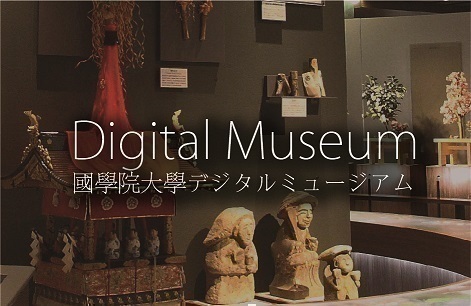- トップ
- Encyclopedia of Shinto
- Yabusame shinji
Encyclopedia of Shinto
| Main Menu: | |
| Links: |
詳細表示 (Complete Article)
| カテゴリー1: | 5. Rites and Festivals |
|---|---|
| カテゴリー2: | Individual Shrine Observances |
| Title | Yabusame shinji |
| Text | "Horseback archery rite." A rite held September 16 at Tsurugaoka Hachimangū in Kamakura City, Kanagawa Prefecture. A horseback archery contest (yabusame) takes place in the afternoon at the horse riding area on the shrine grounds (keidai). Three archers dressed in a Kamakura-period hunting outfit called an idedachi receive the blessing of a priest (shinshoku) and a sake offering (miki). Following this, they start to gallop their horses at the signal of a person in the part of magistrate (bugyō). There are three targets numbered one to three, and each rider shoots their arrows from horseback at each target. Another ten rounds or more of horseback archery take place after the three lead archers are finished. A horseback archery rite is held April 22–23 at Hachimangū, a branch (massha) shrine of and on the grounds of Watatsu Shrine in Hamochi Town, Sado District, Niigata Prefecture. Two young archers are chosen from among the shrine's parishoners (ujiko). They confine themselves (sanrō, see shubatsu) for two nights and three days. Early in the morning of the 22nd, bamboos demarcating taboo boundaries (imidake) are erected at the seashore and a purification ceremony for the archers and their horses takes place. The "evening targeting ceremony" (yūmato-shiki) takes place later that day. In it, three of the horses used for ceremonial offerings (shinme) are lined up before the shrine gate (torii). There is a ceremony and then the two archers shoot arrows into the sky. On the morning of 23rd, the three horses are arranged before the shrine gate and food offerings to the kami (shinsen) are presented. The horseback archery contest is held at the Hachimangū, which functions as a temporary resting place for shrine processions (otabisho), and before the shrine gate. Starting from in front of the Hachimangū, the first archer gallops and throws the peach leaves he carries before the first target. The second archer throws peach leaves before the second target, goes as far as the gate, and turns and returns to Hachimangū. They then change clothes and three times loose arrows at the targets as they gallop past on horseback. After finishing, they head for Watatsu Shrine. There, the last arrow is shot into the sky before the torii. Arrows, fans (ōgi), and amulets (shinsatsu) are distributed at the shrine. These items are believed to drive off the kami of disease. A yabusame rite is held May 5 at Fujisan Hongū Sengen Shrine in Fujimi City, Shizuoka Prefecture. Shrine buildings are decorated the day before with irises (shōbu) and mugwort (yomogi) for a ceremony distinguished by the presentation of steamed sticky-rice wrapped in leaves (chimaki), bamboo shoots, sweet arrowroot (amakuzu), irises, and mugwort as food offerings (shinsen) to the kami. Once the ceremony is finished, the priests and archers together make the rounds to pay respects at the shrine's auxiliary and branch shrines (sessha,massha), including Wakamiya Hachiman Shrine, Wakanomiya Sengen Shrine, Kanenomiya Shrine, and Fuchi Shrine. In the meantime, a target is erected on the grounds before the shrine and the riders perform the archery ritual, each shooting a single arrow at the target. Then they return to the horse-riding ground at the main shrine and participate in a test-shooting ceremony called the kannagake no gi. On the afternoon of the 5th, five horseback archers bring offerings and face questioning (toigyōji) to confirm their identities. The yabusame is comprised of the "okonai" and the "hon'nori." The okonai entails the demonstration of various archery techniques such as bow holding (dakiyumi) and kokiyumi before the mounted archers. Continuing, the archer adopts the stances for shooting to the skies and for shooting to the ground. Then he stops his horse and demonstrates the forms for shooting an arrow to the front, back, right, and left, and then at the target itself. Following this, he shoots at the target three times.. The hon'nori follows, in which each archer shoots an arrow at the target as they gallop their horses. This rite is said to have been begun in 1193 as an offering by Minamoto no Yoritomo, who had gone hunting around the base of Mt. Fuji. A yabusame is held on April 15 at the "first shrine" (ichi no miya/sōja) Nukisaki Shrine in Tomioka City, Gunma Prefecture. Two mounted archers take part. Curtains are arranged around the horse-riding ground that lays before the gate to the shrine grounds. Two targets are placed there and the riders shoot them as they gallop past. A yabusame ceremony (yabusame-shiki) is held October 9 as part of the annual festival (reisai) at Mononobe Shrine in Ōta City, Shimane Prefecture. The afternoon the day before the festival, organizers erect three targets on the street before the shrine, using it as a horse-riding grounds. They then spread sand about, after which horses are taken on a test run. This is called "showing the horse-riding ground" (babamise). The day of the event, in the afternoon, after a "daybreak ceremony" (gyōtensai) and a shrine-maiden dance (mikomai, see miko), the person in charge that year (nenban) and the caretakers dress in warrior outfits and old ceremonial clothing (kamishimo) and then mount horses. Carrying a banner, they leave the shrine to parade about town before returning. This is called the "renewal of donations" (kifumono aratame). Next, the horseback-archery rite proper is held on the shrine grounds using three horses. In addition, there is a ceremony called "the handover of the votive offering horse" (shinme hikiwatashi) in which the horse offered as a votive is led back and forth three times in the forecourt of the main shrine buildings. See alsoYabusame — Mogi Sakae |




